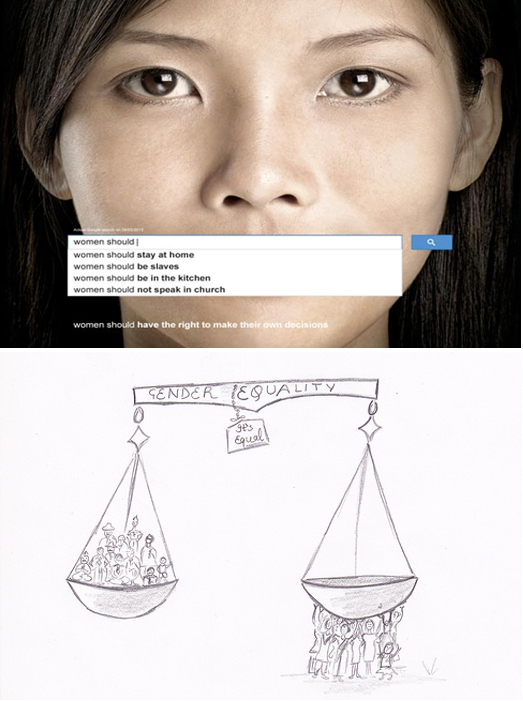
I have prepared two claims. First regarding gender roles: gender should not choose roles, and second regarding working conditions: women must work hard to reach equality in work force. For the first message, I am asserting that gender should not be the key factor in assigning roles. I believe that it is time to break the old stereotype of gender roles. And for the second message, I am insisting the fact that women must work harder to be treated equally, in terms of wage and promotion issue, is against feminism.

For both claims I have brought metaphorical image. The first image shows how gender stereotypes still negatively affects society through the related search words. With related search image, in addition, the search box covering the woman’s mouth depicts lack of freedom of choice. The image for the work conditions suggests that gender equality is reached with women’s effort by drawing women pulling down the scale to set it to ‘equal.’
Which persuasive material do you think is more compelling? In my opinion, the metaphorical image is, just simply because it is visually represented and I think this is what most of you think. As the digital media developed and media convergence happened, the advertising industries are ever more concerned about the visual persuasion techniques. Yet, the visual representation itself does not do well enough in persuading the potential customers. Many previous researches found out that visual representation tied with metaphorical message has the highest and strongest persuasive effect.
Visual metaphors contain somewhat more complex and implicit messages which can be interpreted in several different ways. This process makes potential customers’ cognitive elaboration to increase, making the persuasion effect larger. Researches conducted proved that metaphorical images enhance the chances of attitude change, which are likely to move on to purchasing behaviour (the prime goal of advertisement).
So, as potential customers, we are being unconsciously being persuaded by these metaphorical images that appear in television, Facebook, and etc. as the literal persuasion era is almost passed by with the incline of digital media. It might be a good idea to be aware of those messages that tries to trick your mind!
- Reference


Recent Comments